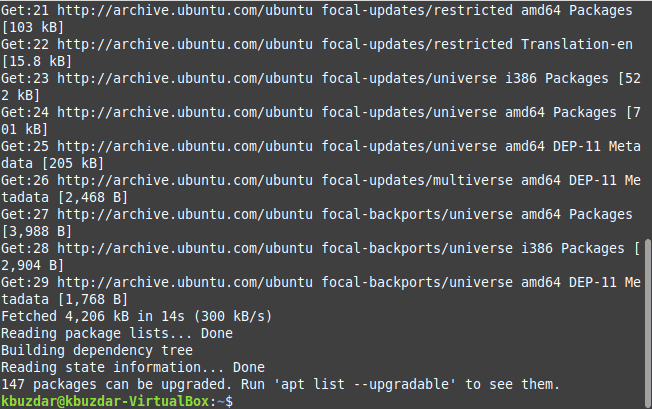Introduction:
We know that some applications are platform specific i.e. they can only run on specific operating systems. Therefore, if you want to run an application that is meant for the Windows operating system on a Linux based system, you need to have a workaround. Wine is such a software that allows you to run the applications meant for the Windows operating system on any Linux distribution. Today, we will be discussing with you the method of installing Wine on Linux Mint 20.
Method of Installing Wine on Linux Mint 20:
To install Wine on your Linux Mint 20 system, you will have to follow all the steps that we have listed over here:
Step # 1: Check the Architecture of your System:
Most of the software that we use these days is specific to particular system architecture i.e. 32 bit or 64 bit. Therefore, before installing any software on your Linux Mint 20 system, you have to check whether your system is 32 bit or 64 bit so that you can install the relevant version of Wine on it. To check the architecture of your Linux Mint 20 system, you have to run the following command:
lscpu
![]()
This command will list down all the essential CPU related details on the terminal. However, the detail of our concern is highlighted in the image shown below. Here, 32-bit, 64-bit written in the CPU op-mode field indicates that our Linux Mint 20 system is 64 bit. If it would have been 32-bit only, then we would have just seen 32-bit written in the CPU op-mode field.

Step # 2: Update your Linux Mint 20 System:
Once we have checked the architecture of our Linux Mint 20 system, then before installing Wine 64-bit version on it, we need to update our system as follows:
sudo apt update
![]()
The completion of the system update process will display these messages on the Linux Mint 20 terminal:

Step # 3: Install the Respective Version of Wine according to the Architecture of your Linux Mint 20 System:
Now we have to install the respective version of Wine i.e. 64 bit on our Linux Mint 20 system. We can do this by running the following command in the terminal:
sudo apt install wine64
![]()
You will have to wait for a few minutes till the installation of Wine will complete and you get to see the messages shown in the image below on your terminal:

Step # 4: Verify the Successful Installation of Wine on your Linux Mint 20 System:
We can even cross check if Wine has been successfully installed on our Linux Mint 20 system or not. This can be done by checking its version which will only be displayed if Wine will be installed on your system. The version of Wine can be checked by running the following command:
wine --version
![]()
The version of Wine that is installed on our Linux Mint 20 system is shown in the image below which indicates that Wine has been successfully installed on our Linux Mint 20 system.

Method of Removing Wine from your Linux Mint 20 System:
As an extra tip, we would also like to show you the method of removing Wine from your Linux Mint 20 system. So that whenever you feel like you do not need it anymore, you can conveniently get rid of it. For removing Wine from your Linux Mint 20 system along with all of its configuration files, you have to run the following command in your terminal:
sudo apt-get purge wine64
![]()
Once this command will finish removing Wine along with its configuration files, it will display these messages on the terminal:

Now there will also be some packages and dependencies which were installed with Wine and now they are of no use. Therefore, to get rid of all such packages and dependencies, you have to run the following command:
sudo apt-get autoremove
![]()
This command will remove all those packages and dependencies that were solely required for Wine to work properly on your Linux Mint 20 system. Once it has finished removing them altogether, you will get to see these messages on your terminal:

Conclusion:
In this article, we shared with you the method of installing Wine on Linux Mint 20. As an additional tip, we also explained to you how you can remove it once you no longer require this software on your system. These steps are extremely helpful and easy to perform for users with any level of expertise.




